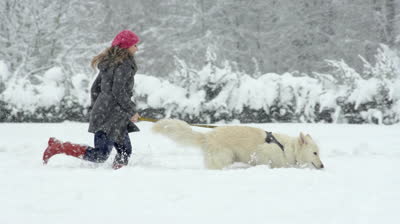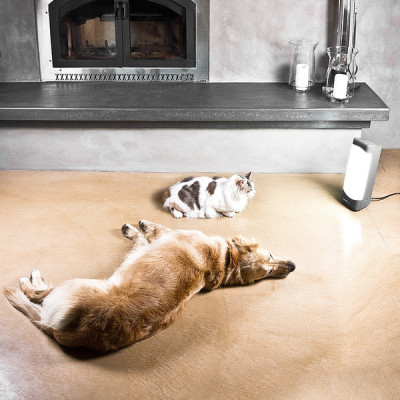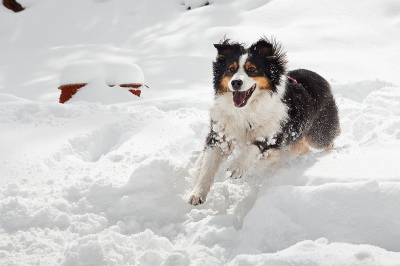
We all know that our moods can change as quickly as the weather outside. And it’s actually been proven that as the seasons come and go, they take our happiness with them. Studies have shown that twenty percent of Americans admit to feeling more depressed during the winter time; a condition that has been given the name of ‘Seasonal Affective Disorder (SAD). Even though cuddling with a pet is proven to raise your spirits, what happens if your pet is in a bad mood too? What makes this even more complicated is that it’s been found that pets are affected by the seasonal changes as well. Yes, it’s true, ladies and gentlemen: pets can get SAD too.
According to Dr. Nicholas Dodman, a veterinary behaviorist, professor at Tufts University, and author of several books, “Everything in the psychological or psychiatric arena that affects people is eventually discovered to affect domestic animals. Knowing this, it would be very surprising if SAD didn’t exist in animals.” According to a survey by the People’s Dispensary for Sick Animals (PDSA), a UK Veterinary charity, as many as one in three dogs owners have noticed the depression-like symptoms of SAD in their dogs and half reported that their dogs slept more in the winter months, another warning sign of SAD. Additionally, one in three cat owners said that their cats seemed “sadder” and less energetic. The PDSA states that animals who suffer from SAD are likely to display symptoms extremely similar to that of their human counterparts, such as depression, lack of energy, and fatigue.

Scientists have discovered that SAD has to do with the hormone melatonin, the chemical responsible for natural sleep. It is produced by the pineal gland, also known as the “third eye.” As your retinas pick up light, it connects through tracks to your other brain structures and to the pineal gland. So, when there’s a lack of light, these structures are not being stimulated and your melatonin production increases. And experts now believe the same process can affect animals in the same way. Symptoms include suffering from aching tiredness, sadness and different or strange eating patterns.
In a past study, led by Ohio State University’s Randy Nelson, hamsters displayed signs of depression when subjected to low levels of light. The 101 hamsters (53 males, 48 females) lived for 60 days in several containers. Some were exposed to 16 hours of light (long, summer days) and others, eight hours of light (shorter, winter days). At the end of the study, Nelson found a clear connection to the level of anxiety and depression and the total hours of light the hamsters were exposed to.
However, since we can’t very well have an effect on the lack of daylight that occurs during the winter months, we have to come up with loopholes to keep our pets from getting depressed! Dr. Jeff Werber, a renowned veterinarian and pet parenting specialist, has a few tips as to how to combat SAD before it takes over you and your pet’s life:
1) Go for a run.

Take your dog out for a brisk walk or jog; physical exercise is proven to release endorphins and ease stress. It will also keep them from get stiff and sore from the cold weather. (Note: it is best to do this in the middle of the day since that is when there is the most sun and warmth. If you have to work during the day, consider hiring a dog walker for the days you’re busy.)
2) Bond with your dog.

Make sure to take the time every day to bond with your dog. Play a game of fetch, tug of war, soccer… preferably something active though, so you can get both their circulation and mind working. After doing something active with your dog, feel free to relax in front of the TV or read a good book with them. Dogs need attention and affection, especially in the winter with SAD is looming over them. Stop it before it starts by giving them no reason to seek out the attention they crave.
3) Decrease the food.

If your dog is not as active in the winter, and there’s no way you can make sure that gets up and moves, remember to decrease his food intake by 10%. This will help prevent him from gaining weight during the winter as he spends more time eating and snoozing than romping around the yard using that food as energy.
4) Buy a LightBox.

This genius contraption, invented by Max Marvin, is a box that copies the sun by radiating artificial light to an indoor space. Known as the ‘Sol Box‘, this light-therapy device is a version made specifically for cats and dogs suffering from a deprivation of sunlight. The special version is on the more expensive side, but you can get artificial sunlight bulbs and cheaper versions of regular light boxes to fulfill the same purpose.
Nobody wants to be depressed; neither you, nor your pet. Make sure you stay on top of your game by adjusting your schedules to fit what you can and can’t control.

Forget SAD, Get GLAD!
For the Best that Pet Lifestyle has to offer follow Wendy Diamond on Facebook, Twitter, and right here at AnimalFair.com!
